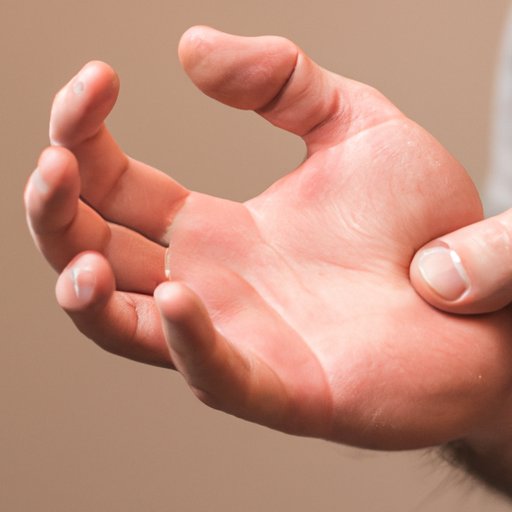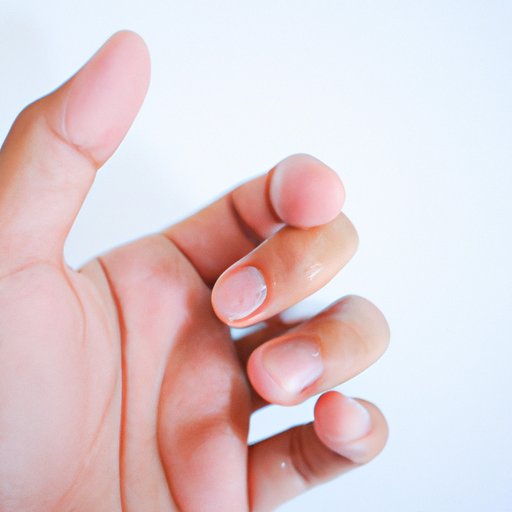
How to Tell if Your Finger is Broken or Sprained
Accidents happen, and sometimes they involve our fingers. Whether it’s playing sports, working on a construction site, or simply closing a door too forcefully, it’s always important to know how to tell if you have a broken or sprained finger. Why is it so important? Because a misdiagnosis can lead to improper treatment, which can result in pain, discomfort, and even long-term damage. In this article, we’ll explore the symptoms, differences, and first aid for broken and sprained fingers, as well as prevention, treatment, and when to seek medical attention.

Symptoms of a Broken or Sprained Finger
Whether you’re dealing with a broken or sprained finger, there are certain symptoms that you’re likely to experience:
- Swelling
- Pain
- Tenderness
- Discoloration (bruising or redness)
However, the severity of these symptoms can vary depending on the specific injury. For example, a sprain might cause less pain than a fracture, but it could still lead to swelling and tenderness. Another factor to consider is the location of the injury; for instance, a broken finger near the wrist might cause swelling and discoloration further up the arm.
So, how can you tell if your finger is broken or sprained? One tip is to pay attention to how the injury occurred. Did you experience a direct blow to the finger, or did you twist it in an unusual way? In general, broken fingers are more likely to result from direct blows, while sprained fingers may be caused by twisting or bending.
Comparison of Broken and Sprained Finger Injuries
It’s important to note that a broken finger is not the same as a sprained finger. While they can have similar symptoms, the underlying injury is different:
- Broken finger: A broken (or fractured) finger occurs when one or more of the bones in the finger is cracked or broken. This can range from a minor crack to a complete break, and it can affect any of the three bones in the finger (the distal, middle, or proximal phalanx).
- Sprained finger: A sprained finger occurs when the ligaments in the finger are stretched or torn. This can cause pain and swelling, but it is not usually as severe as a broken finger.
So, how can you tell if you have a broken finger or a sprained finger? Depending on the severity of the injury, you may notice:
- Bone protruding from the skin: A broken finger can result in a bone protruding from the skin, which is a clear sign of a fracture.
- Deformity: A broken finger can also cause a visible deformity, such as a crooked or misaligned finger.
- Limited mobility: If you’re unable to move your finger or experience extreme pain when attempting to do so, you may have a broken finger.
- Popping sound: In some cases, a loud popping sound can be heard when a finger is broken.
If you suspect that you have a broken finger, it’s important to seek medical attention as soon as possible. In the meantime, apply ice to reduce swelling and pain, and keep the finger elevated to minimize blood flow.
First Aid for Broken or Sprained Fingers
Whether you’re dealing with a broken or sprained finger, there are certain steps you can take to promote healing and reduce discomfort. These include:
- Rest: Avoid using the injured hand/finger as much as possible to prevent further damage.
- Ice: Apply ice to the injury site for 10-20 minutes at a time, up to four times a day. This can help reduce swelling and pain.
- Compress: Wrap the injured finger with a bandage or splint to immobilize it and prevent further damage.
- Elevate: Keep the finger raised above the heart (while sitting or lying down) to reduce swelling and promote healing.
If you’re unsure whether your finger is broken or sprained, it’s still a good idea to follow these first aid steps until you can seek medical attention.
Preventing Broken or Sprained Fingers
The best way to deal with a finger injury is to prevent it from happening in the first place. Here are some tips for avoiding broken or sprained fingers:
- Wear protective gear: If you’re playing sports, working with machinery, or engaging in any other activity that carries a risk of finger injury, wear gloves, wrist guards, or other protective gear.
- Use caution: Be mindful of heavy objects, doors, and other potential hazards when using your hands and fingers in daily activities.
- Stretch and exercise: Regular stretching and strengthening exercises can help improve flexibility and reduce the risk of injury.
- Avoid overuse: If you’re using your hands/fingers for repetitive tasks (such as typing or playing an instrument), take breaks and stretch frequently.
Of course, accidents happen even when we take precautions. But by being cautious and proactive, you can minimize your risk of a finger injury.
Treatment and Recovery for Finger Injuries
Depending on the severity of your injury, there are several treatment options available:
- Casting/splinting: For less severe fractures or sprains, a cast or splint may be used to immobilize the finger and promote healing.
- Surgery: If the finger is severely broken or requires realignment, surgery may be necessary to repair the damage.
- Physical therapy: Once the injury has healed, physical therapy can help restore range of motion and strength to the affected finger.
It’s important to follow your doctor’s recommendations for treatment and recovery to ensure the best possible outcome. Depending on the nature of your injury, it may take several weeks or months to fully heal.
When to See a Doctor for a Finger Injury
While some finger injuries can be treated at home, there are certain signs that may indicate the need for medical attention:
- Severe pain: If the pain is intense and not relieved by over-the-counter pain medications, it may be a sign of a more serious injury.
- Visible deformity: If your finger looks crooked or bent in an unusual way, it’s best to seek medical attention as soon as possible.
- Difficulty moving: If you’re unable to move your finger or experience limited range of motion, you may have a more serious injury.
- Lack of improvement: If your symptoms persist or worsen after several days of home treatment, it may be time to see a doctor.
During a medical evaluation for a finger injury, your doctor will likely perform a physical examination and possibly order X-rays or other imaging tests to assess the damage. Depending on the severity of the injury, they may recommend a course of treatment ranging from rest and ice to surgery.
Conclusion
Whether you suspect a broken or sprained finger, it’s important to take the injury seriously and seek proper diagnosis and treatment. By being aware of the symptoms and differences between these injuries, as well as following first aid and prevention tips, you can protect your hands and fingers from long-term damage. If you’re experiencing pain, swelling, or other symptoms of a finger injury, don’t hesitate to seek medical attention and get on the road to recovery.





